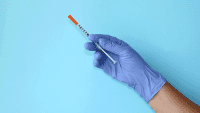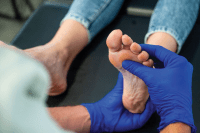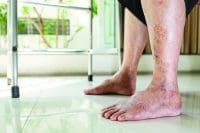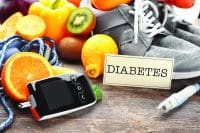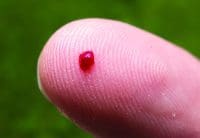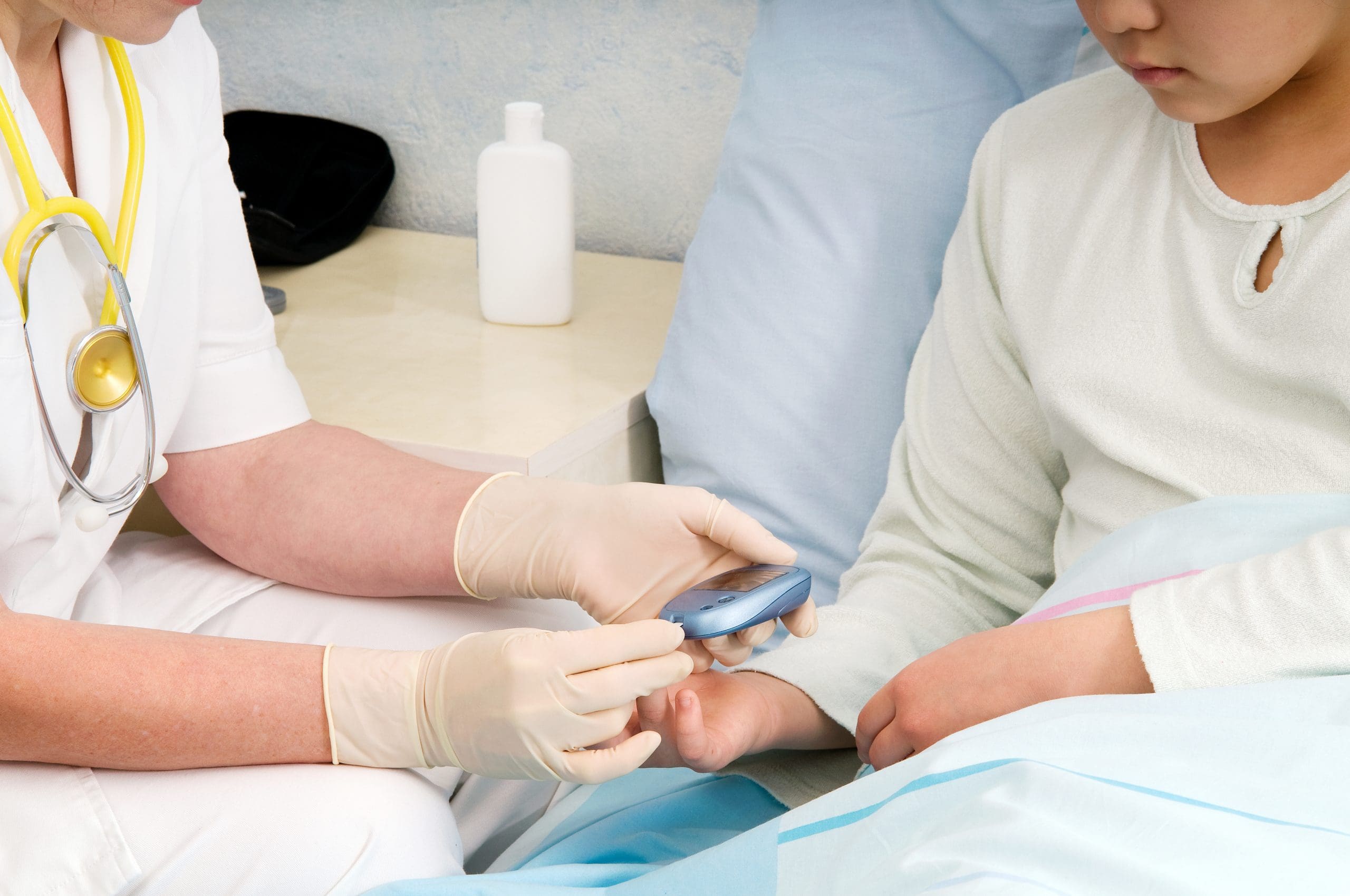Diabetes mellitus (DM) is a serious health problem, affecting at least 1 out of every 11 individuals in the United States and all strata of society. Currently, 29.1 million individuals have DM—9.3% of the U.S. population¾and 8.1 million remain undiagnosed. (About 1.25 million U.S. adults and children have type 1 DM.)
The prevalence of type 2 DM (T2DM) is reaching epidemic proportions, affecting 12.3% of individuals age 20 or older and 25.9% of those over age 65. The global prevalence of T2DM is forecast to increase from 387 million in 2014 to 592 million by 2035. Factors associated with the expected increased incidence of T2DM include an overconsumption of high-fat foods supplemented with corn syrup and lack of physical activity.
Physical activity and exercise
Physical activity is one of the most effective methods for preventing and treating T2DM because obesity is a factor in the development of insulin resistance in T2DM. (See About Type 2 diabetes.) Physical activity involves any muscular movement that requires energy.
Exercise is activity that is planned with the intention to improve health. Exercise has been called the closest thing there is to a magic bullet when it comes to preventing T2DM. In fact, exercise may be superior to medications for health-related benefits in individuals with T2DM, but an estimated 50% of individuals do not participate in regular exercise.
Healthcare providers may not have time to emphasize the importance of exercise, and exercise is often considered useful, rather than essential. T2DM has been dubbed “the stealth epidemic” because of its insidious onset. Exercise could be considered the “stealth solution” to T2DM because of the many benefits that it confers, some of which are immediately apparent. Exercise prescriptions are currently considered essential for individuals with T2DM. Nurses have a key role in educating individuals with T2DM of the significant benefits that result from exercise and warning of the hazardous consequences of T2DM.
Motivating patients to exercise
As the old adage goes, an ounce of prevention is worth a pound of cure. The main reason cited for a lack of regular exercise is time, but any exercise is better than nothing at all.
The reality is that individuals with T2DM are more likely to be sedentary, further increasing the risk for injuries and diabetes-related complications that eventually result in an inability to tolerate physical activity and exercise. A vicious cycle develops preventing motivation to exercise, and individuals with T2DM often suffer from depressive symptoms that affect motivation. (See The T2DM vicious cycle preventing motivation.) Exercise breaks this cycle, alleviating depressive symptoms and improving motivation. Perhaps most important for persons with T2DM is the simplest intervention: motivating people to change their lifestyle.
Nurse can use several tactics to encourage exercise.
Use 21st-century strategies
Fitbits, online social networks, and text messaging are technological strategies that have been proven to help change behavior and achieve exercise goals. Social support may help to motivate individuals to incorporate exercise as a routine part of their lifestyle. Mobile applications for weight loss and diabetes prevention can be used as reminders for the exercise session.
The Diabetes Prevention Recognition Program (DPRP) certifies electronic and mobile health-based modalities as effective vehicles for prevention and treatment that may be considered along with more traditional face-to-face and coach-driven programs.
Get the exercise dose right
The priority for individuals with T2DM is to improve control of blood glucose and insulin sensitivity. When beginning exercise at a low to moderate intensity, a stress test is usually not necessary in asymptomatic individuals. However, if the duration of T2DM is 10 years or greater, regardless of age, an exercise stress test and ECG are recommended.
The Exercise Vital Sign Questionnaire is a useful method to measure the amount (minutes) of moderate- or vigorous-intensity exercise that is tolerable and safe. This information will help to determine an accurate recommendation for beginning exercise.
The American College of Sports Medicine (ACSM) uses the acronym FITT to determine the exercise dose as follows:
- Frequency is how often exercise occurs.
- Intensity involves the difficulty of activity and is reflected by the heart-rate response (HRR) and rating of perceived exertion (RPE).
- Time is minutes spent per session of exercise.
- Type of exercise (should require the use of large muscle groups and involve a type of activity that is enjoyable).
The ACSM recommends 150 minutes of moderate-intensity activity or 75 minutes of vigorous-intensity activity per week for individuals with T2DM, for an average of 3 to 7 days per week. Additional health benefits have been observed with sessions of 300 minutes or more of moderate- to vigorous-intensity exercise. Resistance exercise is recommended in addition to aerobic exercise at least 2 to 3 days per week.
Understand and measure exercise intensity
There are several ways to measure exercise intensity. Two methods of measuring exercise intensity, the oxygen uptake reserve (VO2R) and oxygen consumption (VO2), require an exercise test.
Individuals with T2DM may have blunted heart rate and blood pressure responses to exercise, so determining the intensity or rating of perceived exertion (RPE) during the session is important.
Starting out. For individuals with T2DM, begin exercise at a light intensity and gradually increase to moderate intensity exercise. (See Exercise intensity measurements.)
Light intensity activity is approximately 50-60% of the maximum heart rate, and the heart rate is a good indicator of intensity. The maximum heart rate is equal to 220 minus the age of an individual. (The calculation for women was recently changed to 208 minus [0.88 times age]) The target heart rate (THR) can be calculated from the maximum heart rate and is useful to determine safe exercise intensities.
To calculate the range for the THR, follow these easy steps:
- Subtract age from 220 for the maximum heart rate (HRmax). For example, 220-40 = 180 bpm.
- Subtract the resting heart rate (HRrest) from the maximum heart rate (early in the morning if possible). If HRrest = 70 bpm, then 180-70=110 bpm.
- After calculating the HRmax-HRrest, multiply this number by the percent of intensity during exercise, for the highest and lowest exercise intensity; 110 x .5 = 55 and 110 x .6 = 66 bpm.
- Add the resting heart rate to each of these numbers to determine the safe heart rate range during exercise; 55 + 70 = 125, 66 + 70 = 136 bpm.
- The heart rate during exercise should be between 125-136 bpm.
For sedentary individuals, begin with a 5-minute warm-up and cool-down session. Begin each exercise program with a 5-minute session and gradually increase by 5 minutes per session, up to 30 minutes of continuous exercise. Add resistance exercise as tolerated. Resistance exercise is any exercise that causes the muscles to contract against an external resistance, potentially increasing strength. Resistance exercise should be performed in addition to aerobic exercise and can involve the use of weights, bricks, your own body weight, or any object that causes muscles to contract. Resistance exercise improves insulin sensitivity and decreases waist circumference. Instruct the patient to perform resistance exercise for 10 to 15 repetitions at least 2 to 3 days per week using a weight that is heavy enough to tire the muscles after 10 to 15 repetitions.
Walking is an excellent exercise for beginners as it can be performed at any intensity, accommodating the least fit to the most-fit individual. It is familiar and practical, and it’s easy to have a conversation with a fellow walker, which can encourage longer exercise sessions. If it’s too hard to have a conversation during exercise, the intensity is too high. Walking at a very brisk pace, such as 15 minutes per mile, is considered high-intensity exercise that will result in better glucose control.
Moderate-intensity exercise. Once exercise is safely tolerated at a lower intensity, increasing the intensity is recommended. Moderate-intensity exercise, such as brisk walking, decreases glucose levels and improves insulin sensitivity on a long-term basis. With the cessation of exercise, insulin levels return to the pre-exercise level, but the benefits return if exercise is resumed. Exercise at moderate intensities improves skeletal muscle metabolism and the ability of the muscle to use oxygen so exercise is easier and the risks associated with T2DM are decreased. Walking uphill or at a faster pace are additional ways to gradually increase intensity.
Vigorous intensity exercise. An acute bout of vigorous intensity exercise requires a short amount of time and improves the use of oxygen in the body; however, it does not result in weight loss. However, vigorous intensity exercise is beneficial even without weight loss because it lowers blood glucose levels, glycemic control, and insulin sensitivity for a short time period (up to 72 hours after exercise) and is usually performed at a higher intensity. Brief exercise bouts at high intensities that are alternated with periods of recovery result in benefits similar to those observed from longer exercise durations.
Be creative: alternate the “dose” of exercise
Individuals with T2DM may not be able to meet the recommended guidelines of 30 minutes of daily exercise because of time constraints or physical limitations. Recent research has demonstrated that significant health benefits result from three sessions of 10 minutes of exercise performed throughout the day as an alternative dose of exercise. Aerobic exercise improves the use oxygen in the body, regardless of intensity, so alternative doses of exercise are recommended.
Monitor blood glucose
Losing weight lowers blood glucose levels. Individuals with T2DM who lose weight may require less medication to control glucose levels. Usually at least 45 minutes of exercise is necessary for weight loss, since fat is the fuel for performance with this duration.
Baseline glucose level is an important predictor of the ability to enjoy exercise without experiencing complications. Exercise is not recommended with blood glucose levels greater than 250 mg/dL. Instruct the patient to check glucose levels 30 minutes prior to exercise and just before the session begins. Hypoglycemia is a risk during and after exercise, especially if taking medications for T2DM, and medication-related hypoglycemia impairs exercise ability. If glucose level decreases while exercising, exercise should be avoided until glucose levels are normal.
Caring for feet and emergencies
Inform patients with T2DM to monitor their feet on a consistent basis. Footwear should be appropriate to the type of activity and replaced when extreme wear is noticed in order to prevent complications. If an injury to the feet occurs, teach patients to use the REST acronym to remember the steps: rest, ice, compress, and elevate. Instruct patients to temporarily refrain from exercise to promote healing and prevent further complications.
In addition, patients should be counseled to stop exercising immediately if they have any type of chest pain, and to call 911 or go to the emergency department.
Future implications
T2DM is a global public health problem. Most people are not exercising and engaging in physical activity on a regular basis, especially people with T2DM. The goal for nurses today should be preventing diabetes before it develops, and once it does develop, to help patients begin an exercise and activity program they will stay with. Nurses can use creative strategies to encourage all their patients to participate in regular exercise to prevent the development of T2DM and its complications. The rewards are well worth the effort.
Elizabeth Moxley is assistant professor and Ann Kruk is a student nurse at DePaul University in Chicago, Illinois.
Selected references
American College of Sports Medicine. Guidelines for exercise testing and prescription. (9th ed.). Philadelphia, PA: Lippincott Williams & Wilkins; 2014.
Centers for Disease Control and Prevention National Diabetes Prevention Program. Implement a lifestyle change program (for professionals).
Centers for Disease Control and Prevention National Diabetes Prevention Program. Registry of recognized organizations.
DeFronzo RA, Eldor R, Abdul-Ghani M. Pathophysiologic approach to therapy in patients with newly diagnosed type 2 diabetes. Diabetes Care. 2013;36(suppl 2), S127-138.
Exerciseismedicine.org Website. Healthcare providers’ action guide.
Exerciseismedicine.org Website. Introductory resistance program 3.
Levine DM, Savarimuthu S, Squires A, et al. Technology-assisted weight loss interventions in primary care: a systematic review. J Gen Intern Med. 2015;30:107-117.




